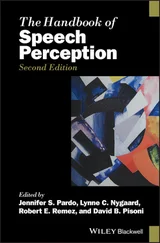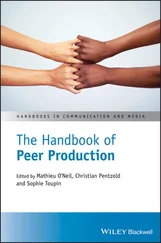23 Coplan, R.J., Zelenski, J., & Bowker, J.C. (2018). Well enough alone? The costs and benefits of solitude. In J.E. Maddux (Ed.), Subjective Well‐Being and Life Satisfaction (pp. 129–147). New York: Routledge.
24 Coplan, R.J., Prakash, K., O'Neil, K., & Armer, M. (2004). Do you "want" to play? distinguishing between conflicted shyness and social disinterest in early childhood. Developmental Psychology, 40, 244–258.
25 Coplan, R.J., Rose‐Krasnor, L., Weeks, M., Kingsbury, A., Kingsbury, M., & Bullock, A. (2013). Alone is a crowd: social motivations, social withdrawal, and socio‐emotional functioning in later childhood. Developmental Psychology, 49, 861–875.
26 Coplan, R.J. & Weeks, M. (2010). Unsociability in middle childhood: conceptualization, assessment, and associations with socio‐emotional functioning. Merrill‐Palmer Quarterly, 56, 105–130.
27 Csikszentmihalyi, M. (1996) Creativity: Flow and the Psychology of Discovery and Invention. New York: Harper Collins.
28 Deci, E.L. & Ryan, R.M. (2000). The “what” and the “why” of goal pursuits: human needs and the self‐determination of behavior. Psychological Inquiry, 11, 227–268.
29 Epley, N. & Schroeder, J. (2014). Mistakenly seeking solitude. Journal of Experimental Psychology: General, 143, 1980–1999.
30 Eysenck, H.J. & Eysenck, M.W. (1985). Personality and Individual Differences: A Natural Science Approach. New York: Plenum Press.
31 Erzen, E. & Çikrikci, Ö. (2018). The effect of loneliness on depression: a meta‐analysis. International Journal of Social Psychiatry, 64, 427–435.
32 Freud, S. (1930/1961). Civilization and its discontents. In J. Strachey (Ed. and Trans.), The Standard Edition of the Complete Psychological Works of Sigmund Freud (Vol. 21, pp. 57–145). London: Hogarth Press. (Original work published 1930)
33 Galanaki, E.P. (2015). Solitude as a state of positive aloneness in childhood and adolescence. In C.J. Kowalski, J.P. Cangemi, & A. Rokach (Eds.), Loneliness in Life: Education, Business, and Society. (pp. 168–190). Dubuque, IA: McGraw Hill.
34 Goossens, L. (2014). Affinity for aloneness and preference for solitude in childhood: linking two research traditions. In R.J. Coplan, & J.C. Bowker (Eds.), The Handbook of Solitude: Psychological Perspectives on Social Isolation, Social Withdrawal, and Being Alone (pp. 150–166). New York: Wiley‐Blackwell.
35 Hamilton, W.D. (1964). The evolution of social behaviour II. Journal of Theoretical Biology, 7, 17–52.
36 Harlow, H., (1958). The nature of love. American Psychologist, 13, 573–685.
37 Hart, C.H., Yang, C., Nelson, N.J., Robinson, C.C., Olsen, J.A., Nelson, D.A., Porter, C.L., Jin, S., Olsen, S.F., & Wu, P. (2000). Peer acceptance in early childhood and subtypes of socially withdrawn behavior in China, Russia and the United States. International Journal of Behavioral Development, 24, 73–81.
38 Hay, D. & Morisey, A. (1978). Reports of ecstatic, paranormal, or religious experience in Great Britain and the United States – a comparison of trends. Journal for the Scientific Study of Religion, 17, 255–268.
39 Hollis, C., Livingstone, S., & Sonuga‐Barke, E. (2020). Editorial: The role of digital technology in children and young people's mental health – a triple‐edged sword? Journal of Child Psychology and Psychiatry, 61, 837–841.
40 Holt‐Lunstad, J., Smith, T.B., Baker, M., Harris, T., & Stephenson, D. (2015). Loneliness and social isolation as risk factors for mortality a meta‐analytic review. Perspectives on Psychological Science, 10, 227–237.
41 Horney, K. (1945). Our Inner Conflicts: A Constructive Theory of Neurosis. New York: Norton.
42 Kagan, D.M. (1990). Ways of evaluating teaching cognition: inferences concerning the Goldilocks Principle. Review of Educational Research, 60, 419–469.
43 Kidd, C., Piantadosi, S.T., & Aslin, R.N. (2014). The Goldilocks Effect in infant auditory attention. Child Development, 85, 1795–1804.
44 Kim, H., Schimmack, U., Oishi, S., & Tsutsui, Y. (2018). Extraversion and life satisfaction: a cross‐cultural examination of student and nationally representative samples. Journal of Personality, 86, 604–618.
45 Kim, J‐H. & Lee, J.R. (2011). The Facebook paths to happiness: effects of the number of Facebook friends and self‐presentation on subjective well‐being. Cyberpsychology, Behavior, and Social Networking, 14(6), 359–364.
46 Lapierre, M.A. (2020). Smartphones and loneliness in love: testing links between smartphone engagement, loneliness, and relational health. Psychology of Popular Media, 9, 125–134.
47 Larson, R.W. (1990). The solitary side of life: an examination of the time people spend alone from childhood to old age. Developmental Review, 10, 155–183.
48 Larson, R.W. (1999). The uses of loneliness in adolescence. In K.J. Rotenberg, & S. Hymel (Eds.), Loneliness in Childhood and Adolescence (pp. 244–262). New York: Cambridge University Press.
49 Leary, M.R., Herbst, K.C., & McCrary, F. (2001). Finding pleasure in solitary activities: desire for aloneness or disinterest in social contact? Personality and Individual Differences, 35, 59–68.
50 Leary, M.R., Herbst, K.C., & McCrary, F. (2003). Finding pleasure in solitary activities: desire for aloneness or disinterest in social contact? Personality and Individual Differences, 35, 59–68.
51 Leung, L. (2015). Using tablet in solitude for stress reduction: an examination of desire for aloneness, leisure boredom, tablet activities, and location of use. Computers in Human Behavior, 48, 382–391.
52 Liu, J., Chen, X., Coplan, R.J., Ding, X., Zarbatany, L., & Ellis, W. (2015). Shyness and unsociability and their relations with adjustment in Chinese and Canadian children. Journal of Cross‐Cultural Psychology, 46, 371–386.
53 Liu, J., Chen, X., Zhou, Y., Li, D., Fu, R., & Coplan, R.J. (2017). Relations of shyness‐sensitivity and unsociability with adjustment in middle childhood and early adolescence in suburban Chinese children. International Journal of Behavioral Development, 4, 681–687.
54 Long, C.R. & Averill, J.R. (2003). Solitude: an exploration of benefits of being alone. Journal for the Theory of Social Behavior, 33, 21–44.
55 Long, C.R., Seburn, M., Averill, J.R., & More, T.A. (2003). Solitude experiences: varieties, settings, and individual differences. Personality and Social Psychology Bulletin, 29, 578–583.
56 Lowenstein, P. & Svendsen, M. (1938). Experimental modification of the behavior of a selected group of shy and withdrawn children. American Journal of Orthopsychiatry, 8, 639–654.
57 Marjoribanks, K. (1994). Cross‐cultural comparisons of family environments of Anglo‐, Greek‐, and Italian‐Australians. Psychological Reports, 74, 49–50.
58 Maslow, A.H. (1968). Toward a Psychology of Being. New York: Van Nostrand.
59 Mead, G.H. (1934). Mind, Self, and Society. Chicago: University of Chicago Press.
60 Merton, T. (1958). Thoughts in Solitude. New York: Farrar, Straus, and Giroux.
61 Middleton, W.C. (1935). The propensity of genius to solitude. The Journal of Abnormal and Social Psychology, 30(3), 325–332.
62 Montaigne, M. (1965). Of solitude. In D.M. Frame (Trans.), The Complete Essays of Michel de Montaigne (pp. 174–183). Stanford, CA: Stanford University Press.
63 Nelson, L.J. (2013). Going it alone: comparing subtypes of withdrawal on indices of adjustment and maladjustment in emerging adulthood. Social Development, 22, 522–538.
64 Nelson, L.J., Coyne, S.M., Howard, E., & Clifford, B.N. (2016). Withdrawing to a virtual world: associations between subtypes of withdrawal, media use, and maladjustment in emerging adults. Developmental Psychology, 52(6), 933–942.
65 Nelson, L.J., Hart, C.H., Yang, C., Wu, P., & Jin, S. (2012). An examination of the behavioral correlates of subtypes of nonsocial play among Chinese preschoolers. Merrill‐Palmer Quarterly, 58, 77–108.
Читать дальше




![О Генри - Справочник Гименея [The Handbook of Hymen]](/books/407356/o-genri-spravochnik-gimeneya-the-handbook-of-hymen-thumb.webp)







